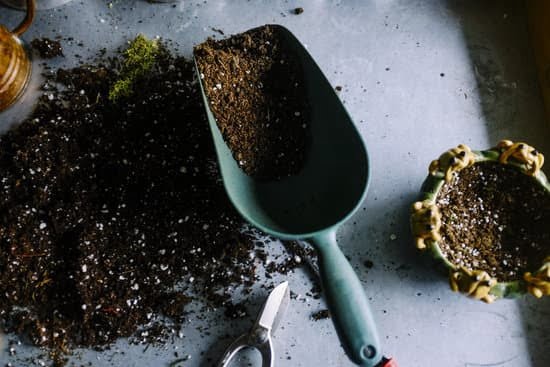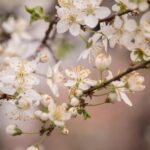Yard landscaping plays a crucial role in enhancing the overall appearance of a home, creating an inviting outdoor space for relaxation and entertainment. From lush gardens to well-designed hardscapes, the right yard landscaping can transform a property into a beautiful and functional oasis. In this article, we will explore various yard landscaping ideas to help you create a stunning outdoor environment that complements your home and lifestyle.
When it comes to yard landscaping ideas, there are endless possibilities to consider. From selecting the perfect plants and trees to incorporating unique features and textures, careful planning and design are key to achieving the desired aesthetic. Whether you have a spacious backyard or a small urban garden, implementing the right landscaping elements can make a significant difference in the overall appeal of your property.
In the following sections, we will discuss essential considerations for planning and designing your yard landscape, as well as tips for plant selection, hardscaping ideas, creative features, color and texture use, seasonal maintenance, and budget-friendly options. By understanding these key aspects of yard landscaping, you can create a personalized outdoor space that reflects your style and enhances the beauty of your home.
Planning and Design
When it comes to yard landscaping ideas, planning and design are essential steps to ensuring a cohesive and visually appealing outdoor space. Here are some tips for creating a comprehensive plan for yard landscaping:
1. Determine the size and shape of your yard: Start by taking measurements and assessing the overall layout of your yard. Consider any existing features such as trees, slopes, or unique landscape challenges that may impact your design.
2. Consider the desired aesthetic: Think about the overall look and feel you want to achieve with your yard landscaping. Whether you prefer a lush, tropical oasis or a minimalist, modern design, having a clear vision will guide your plant and hardscaping choices.
3. Create a rough sketch or layout: Use graph paper or an online landscape design tool to map out your ideas. This will help you visualize different elements such as garden beds, pathways, seating areas, and other features.
Remember that successful yard landscaping requires careful consideration of both the natural and built environment. By taking these planning and design tips into account, you can create a tailored landscape that reflects your style while also enhancing the functionality of your outdoor space.
Overall this is an important step in creating an outdoor area that’s perfect for you based on personal needs; whether those are practical or visual – here’s where all great landscapes begin. Sharing these with others certainly helps them get started on their own journey towards finding what’s just right for them too.
Plant Selection
When it comes to yard landscaping, choosing the right plants, trees, and flowers is essential for creating a beautiful and cohesive outdoor space. The selection of vegetation should take into account the climate of the area, as well as the maintenance requirements and overall design goals. Here are some key considerations for plant selection that can help homeowners make the best choices for their yard landscaping ideas.
Climate Considerations
One of the most important factors to consider when selecting plants for yard landscaping is the climate of the area. It’s crucial to choose vegetation that is well-suited to the local climate conditions, including temperature range, sunlight exposure, and average rainfall. Researching which plants thrive in specific climates can help homeowners avoid investing in vegetation that may struggle to survive in their yard.
Maintenance Requirements
Another crucial consideration when choosing plants for yard landscaping is their maintenance requirements. Some species may require frequent watering, pruning, or fertilizing, while others are more low-maintenance. Homeowners should consider how much time and effort they are willing to invest in maintaining their yard and select plants that align with their desired level of upkeep.
Overall Design Goals
Finally, when selecting plants for yard landscaping, it’s important to consider the overall design goals for the outdoor space. Whether aiming for a lush garden paradise or a minimalist modern look, choosing vegetation that complements these design goals is essential.
Factors such as color palette, size and shape of foliage, and seasonal bloom patterns should all be taken into account when selecting plants to ensure they contribute to achieving the desired aesthetic for the yard. By carefully considering climate, maintenance requirements, and overall design goals during plant selection, homeowners can create a thriving and visually stunning landscape that enhances the beauty of their home’s exterior.
Hardscaping
When designing a cohesive and functional yard landscape, hardscaping is a crucial component to consider. By incorporating elements such as pathways, patios, and retaining walls, you can create a visually appealing and practical outdoor space that enhances the overall aesthetic of your home. Here are some ideas for effectively integrating hardscaping into your yard landscaping:
Pathways
One effective way to incorporate pathways into your yard landscaping is by using materials such as flagstone, brick, or gravel to create defined walkways. These pathways can serve both practical and decorative purposes by guiding guests through the yard while also adding visual interest. Additionally, consider integrating curves and meandering pathways to create a more dynamic and natural flow throughout the landscape.
Patios
A well-designed patio can serve as an outdoor living space for entertaining, dining, or simply relaxing. When planning for a patio in your yard landscape, consider factors such as size, placement in relation to the home, and the desired level of privacy. Additionally, explore options for materials such as concrete pavers, natural stone, or wood decking to achieve the desired aesthetic while complementing the overall design of the yard.
Retaining Walls
In sloped yards or areas with elevation changes, retaining walls can be both functional and visually appealing. These structures not only help prevent soil erosion but also create opportunities for terraced gardens or seating areas. When incorporating retaining walls into your yard landscaping, consider materials that complement the existing elements of your home and explore options for integrating planting spaces within the wall design.
By thoughtfully incorporating these hardscaping elements into your yard landscaping design plan, you can create a cohesive and functional outdoor space that enhances the overall appearance of your home while providing practical benefits. Whether you choose to integrate pathways for navigation, a patio for outdoor living, or retaining walls for structural support, hardscaping plays a vital role in achieving a well-rounded and visually appealing yard landscape.
Creative Features
When it comes to yard landscaping, incorporating creative features can take your outdoor space to the next level. One of the most popular creative features for adding interest to a yard is water features. Whether it’s a small fountain, a pond, or a waterfall, water features can bring a sense of tranquility and natural beauty to any yard. They also provide a focal point that adds visual interest and can even attract wildlife.
Another great creative feature to consider for your yard landscaping is outdoor lighting. Strategic placement of lighting can not only enhance the aesthetics of your yard, but also extend the usability of outdoor spaces well into the evening. From string lights and lanterns to spotlights and pathway lighting, there are numerous options for illuminating your yard in a way that highlights its best features.
For those looking to make a bold statement with their yard landscaping, artistic installations can be the perfect way to add interest and personality to the space. This could include sculptures, mosaics, or custom-built structures like pergolas or trellises. These unique additions can serve as conversation starters and create a one-of-a-kind atmosphere in your yard.
Incorporating these creative features into your yard landscaping can help transform it into an inviting and visually stunning outdoor oasis. By carefully planning and selecting the right water features, outdoor lighting, or artistic installations, you can create a unique and beautiful landscape that reflects your personal style and enhances the overall appeal of your home.
Color and Texture
When it comes to yard landscaping, color and texture play a crucial role in creating visual interest and depth in the overall design. By carefully choosing the right combination of colors and textures, homeowners can elevate the appearance of their yard and make it truly stand out. Here are some tips for using color and texture to enhance your yard landscape:
- Choose a Color Scheme: Consider selecting a color scheme for your yard that complements the exterior of your home. This could involve coordinating with the color of your house or using contrasting colors to create an eye-catching look.
- Utilize Different Textures: Incorporating a mix of textures in your yard landscaping can add depth and dimension to the space. This could include combining smooth surfaces like stone or metal with rougher textures like gravel or bark.
- Seasonal Variations: Plan for seasonal changes by incorporating plants that bloom at different times of the year, offering a diverse range of colors throughout the seasons.
In addition to planning for color and texture within plant selections, other elements such as hardscaping materials, outdoor furniture, and decorative accents can also contribute to the overall color palette and texture diversity within the yard landscape.
Ultimately, leveraging color and texture effectively in yard landscaping can help create an inviting outdoor space that is visually appealing and adds value to your home. With careful consideration and planning, you can use these design elements to transform your yard into a stunning oasis that reflects your personal style and enhances curb appeal.
Seasonal Maintenance
Maintaining a beautiful yard landscape throughout the changing seasons can be a challenging task, but with careful planning and consistent effort, it is definitely achievable. One of the most important aspects of seasonal maintenance is pruning. Regularly trimming back overgrown shrubs and trees not only keeps them looking neat and tidy, but it also promotes healthy growth. Additionally, pruning can help eliminate diseased or damaged branches that may otherwise affect the overall health of your yard.
Another crucial aspect of seasonal maintenance is watering. Different plants have different water requirements depending on their species, age, and time of year. It’s essential to tailor your watering schedule to meet the needs of your specific landscape. Always check for signs of overwatering or underwatering, and adjust accordingly.
When it comes to seasonal plantings, it’s important to select flowers and foliage that will thrive in each particular season. Consider planting annuals in the spring and summer for vibrant color displays, while focusing on hardy perennials for fall and winter interest. By choosing plants that are well-suited to each season, you can ensure continuous visual appeal in your yard landscape.
Here are some general tips for maintaining a beautiful yard landscape throughout the changing seasons:
- Prune overgrown shrubs and trees regularly
- Tailor your watering schedule to meet the specific needs of your plants
- Select seasonal plantings that will thrive in each particular season
- Keep an eye out for signs of pest infestations or diseases
- Clear away fallen leaves and debris regularly
- Prepare your yard for winter by protecting sensitive plants from frost
| Maintenance Tips | Description |
|---|---|
| Prune Overgrown Shrubs and Trees Regularly | Regular pruning promotes healthy growth and eliminates diseased or damaged branches. |
| Tailor Your Watering Schedule | Adjust watering based on plant species’ specific needs at different times of the year. |
Budget-Friendly Ideas
In conclusion, creating a stunning yard landscape doesn’t have to break the bank. By implementing some budget-friendly yard landscaping ideas, homeowners can still achieve professional and visually appealing results without overspending. There are plenty of cost-effective options for planning and designing an attractive yard that fits within a reasonable budget.
When considering budget-friendly yard landscaping ideas, it’s essential to focus on maximizing resources and being strategic with plant selection, hardscaping elements, and creative features. For example, incorporating low-maintenance plants and utilizing native species can reduce ongoing maintenance costs while still adding beauty to the yard. Additionally, DIY projects such as building a simple pathway or creating a small water feature can save money on labor costs while adding interest to the landscape.
Ultimately, with careful planning and consideration of various cost-saving strategies, it’s entirely possible to create a beautiful yard landscape without overspending. By following these budget-friendly ideas for yard landscaping, homeowners can enhance the overall appearance of their home while staying within their financial means. Whether it’s through prudent plant selection, creative hardscaping features, or seasonal maintenance techniques, achieving a stunning yard landscape is attainable for any homeowner on a budget.
Frequently Asked Questions
What Is the Least Expensive Backyard Landscaping?
The least expensive backyard landscaping options typically involve minimal maintenance and low-cost materials. This could include things like creating a simple gravel or mulch pathway, planting low-maintenance native plants, using inexpensive potted plants for color, or repurposing materials like old tires or wooden pallets for creative DIY projects.
How Do I Landscape My Backyard on a Budget?
Landscaping your backyard on a budget can be achieved by prioritizing what areas you want to focus on and being resourceful with the materials available. Instead of buying new plants, consider dividing and transplanting existing ones.
You can also look for deals at local nurseries, use affordable materials like crushed rock instead of expensive paving stones, and incorporate DIY elements to save on costs.
How Can I Make My Backyard Beautiful?
Making your backyard beautiful involves a combination of thoughtful design, proper maintenance, and attention to detail. Consider creating focal points with eye-catching features like a fire pit or water feature.
Adding lighting can create ambiance and extend the usability of your outdoor space into the evening. In terms of plants, mixing different colors and textures can add visual interest, and regular upkeep such as pruning, weeding, and cleaning will keep your backyard looking its best.

Welcome to my gardening blog! I am passionate about plants and enjoy sharing my knowledge and experiences with others. In this blog, I will write about everything related to gardening, from tips on how to get started to updates on my own garden projects.





